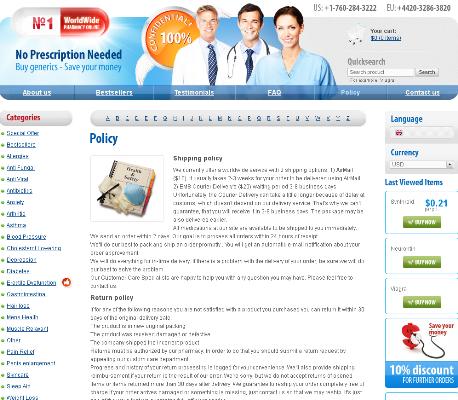Mounjaro Myths Debunked: Separating Facts from Fiction
Myth: Mounjaro Is Just a Weight Loss Shortcut
Many people assume Mounjaro is simply a weight-loss shortcut, a quick fix for stubborn pounds. But that story misses context and nuance: it was developed to improve blood sugar control in type 2 diabetes, and weight change is often a secondary effect. Patients describe fewer hunger cues and steadier glucose, not a miraculous transformation overnight. Responsible use requires a prescriber, monitoring, and lifestyle adjustments.
Teh point is not to glorify pills but to inform: Mounjaro complements diet and exercise and carries side effects and contraindications. Clinicians weigh risks versus benefits, screen for pancreatitis history, and adjust doses; patients follow follow-up plans and report symptoms.
| Benefit | Reality |
| Weight loss | Variable |
How Mounjaro Actually Works Inside Your Body

Teh drug acts on gut-brain and pancreatic pathways: it stimulates GLP-1 and GIP receptors, boosting insulin when glucose is high and suppressing glucagon. By slowing gastric emptying and signaling satiety centers, it subtly reduces hunger and caloric intake without drastic dieting.
Patients on mounjaro often notice lower fasting sugars and steady post-meal levels within weeks, plus weight changes over months. The drug's dual action explains both metabolic gains and appetite shifts, offering a cohesive physiologic framework clinicians can explain to patients.
Think of therapy as guided: common GI complaints occur early and fade, but watch for hypoglycemia if combined with insulin. Regular follow-up allows dose adjustments and ensures benefits outweigh risks for each person's goals.
Side Effects: Common Complaints Versus Real Risks
Teh most common complaints about mounjaro are nausea and gastrointestinal upset; patients often describe these as brief, manageable inconveniences that tend to fade as the body adapts with dose titration and simple dietary adjustments rapidly.
Serious adverse events are less common but warrant attention: pancreatitis, gallbladder disease, and possible thyroid C-cell changes seen in animals. Clinicians stress risk assessment, baseline labs, with prompt evaluation if abdominal pain or vomiting occur.
Another common worry is hypoglycemia when mounjaro is combined with insulin or sulfonylureas; dose adjustments and careful glucose monitoring usually prevent serious lows. Injection site reactions, headaches, or dizziness are typically transient and manageable too.
In practice, clinicians encourage open dialogue: report new symptoms early, don't assume the worst, and jointly weigh benefits against rare risks. For most, careful selection, slow titration, and follow-up transform uncertainty into informed, safer treatment.
Who Should Use Mounjaro: Eligibility and Safety

A careful conversation with a clinician reveals who may benefit and who should avoid it. People with type 2 diabetes, cardiovascular risk, or obesity complications often find mounjaro helpful, but it's not magic. Medication must match medical history, kidney status, other meds; shared decision balances benefits and drawbacks.
Monitoring is key: labs, dose adjustments, and watching for digestive effects or rare pancreatic signals keep patients safe. Aparent contraindications, pregnancy, and certain GI disorders steer clinicians to alternatives. Mounjaro suits many, but individual evaluation and follow-up are neccessary for better outcomes.
Comparing Mounjaro to Other Diabetes Drugs Fairly
I used to think all new diabetes drugs were interchangeable, but watching a friend on mounjaro changed that view. Teh story became a lens: efficacy, dosing schedules, and side effect profiles matter. Clinicians weigh cardiovascular outcomes and glycemic control, not just weight loss, so picking a therapy should be personal and evidence-driven.
A fair comparison looks at trial design, baseline populations, and measurable endpoints instead of headlines. Cost, availability, and safety data influence choices. Patients should discuss drug-specific benefits and risks with clinicians; understanding risk reductions and adherence helps set realistic expectations. In practice, effects on HbA1c, hypoglycemia, cardiovascular outcomes, and lifestyle guide the decision. Guideline updates and payer policies may alter access over time.
| Feature | Mounjaro | Other drugs |
|---|---|---|
| Efficacy | HbA1c & weight benefits | Varies by class |
| Side effects | Nausea, GI issues | Hypoglycemia risk varies |
Pricing, Access, and the Black Market Rumors
Cost talks often begin in a pharmacy, where patients ask if Mounjaro is affordable or worth the risk; shortages and insurance rules spark whispers about black market sales. Teh reality is simpler: manufacturer pricing, copays, and prior authorization create access friction rather than clandestine demand. FDA PubMed
Clinicians and policymakers push for broader coverage and fair pricing, while regulators warn that unregulated products are dangerous; buying injectables outside verified channels risks contamination or wrong dosing. Use prescriptions, patient aid programs, and data, and talk with your clinician first. ClinicalTrials.gov PubMed
<

